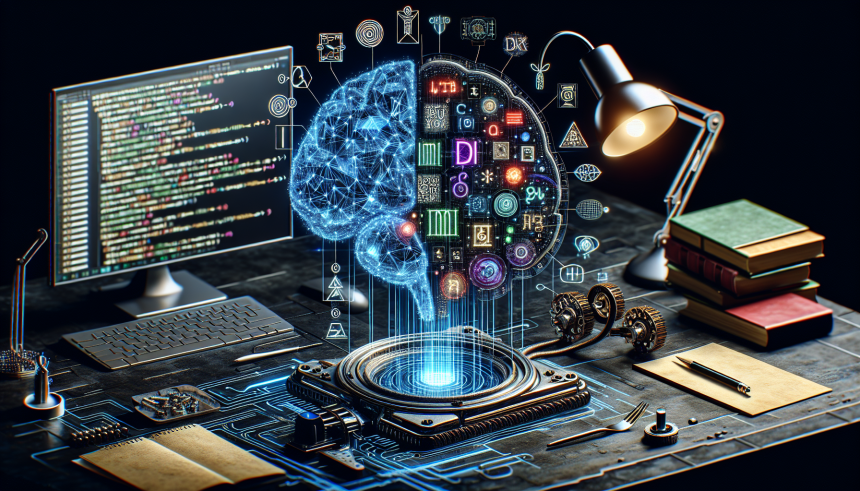Advancements in Natural Language Processing: What’s Happening Now
1. Transformative NLP Models
Over the past few years, we’ve witnessed significant advancements in natural language processing (NLP) with the development of powerful models like OpenAI’s GPT-3 and more recent iterations. These models employ deep learning techniques, specifically using transformer architectures, to understand and generate human-like text. Models such as GPT-4, Google’s BERT, and T5 are at the forefront, significantly improving the accuracy and efficiency of language tasks.
In 2023, the capabilities of these models have expanded beyond mere text generation. They now perform complex tasks such as translation, summarization, and sentiment analysis with remarkable precision. The inclusion of fine-tuning processes allows them to adapt quickly to specific industries, enhancing their usability in sectors like healthcare, finance, and education.
2. Multimodal Learning
The rise of multimodal models represents a significant shift in NLP. Multimodal models can understand and process various forms of data, such as text, images, and audio. OpenAI’s CLIP and DALL-E projects exemplify this shift, combining visual and textual information to generate content that honors the context of both modalities.
Such advancements enable applications in creating detailed visuals from natural language descriptions, thereby bridging the gap between text and other forms of media. As organizations strive for richer user experiences, the demand for these capabilities is expected to grow, paving the way for more interactive applications in virtual and augmented realities.
3. Zero-Shot and Few-Shot Learning
The introduction of zero-shot and few-shot learning methods has enhanced how models generalize across tasks with minimal training data. Models can perform new tasks without extensive retraining or task-specific data, thus reducing resources and improving efficiency. For instance, with few training examples, NLP systems can adapt to niche applications in specialty domains, allowing for more personalized user experiences.
This capacity supports rapid deployment in scenarios where data collection is challenging, empowering organizations to leverage AI intelligence efficiently.
4. Ethical Considerations and Fairness
As NLP technology evolves, there is increasing scrutiny regarding ethical implications. Issues of bias in language models have gained attention, prompting researchers to focus on fairness and accountability. Active efforts are being made to mitigate bias stemming from datasets and develop models that promote inclusivity.
Organizations are investing in creating more transparent AI systems, establishing guidelines for responsible AI usage, and implementing thorough auditing processes. Initiatives aimed at building ethical AI are vital in ensuring that NLP systems serve diverse populations without perpetuating harmful stereotypes or inaccuracies.
5. Conversational Agents and Chatbots
The development of conversational AI has reached new heights, with sophisticated chatbots being integrated across various platforms. Businesses now utilize advanced NLP models to enhance customer support, lead generation, and even personal assistance. These systems can understand context and maintain coherent conversations, significantly improving user interaction.
Recent advancements include emotional recognition, where bots can gauge sentiment from user interactions, allowing for tailored responses. Companies are also focusing on improving usability and personalization, making chatbots more adept at understanding user preferences and behaviors over time.
6. Low-Resource Language Processing
Previously, language processing capabilities were primarily focused on widely spoken languages. Recent developments aim to tackle low-resource languages through transfer learning and augmented datasets, thus enabling better inclusivity for speakers of these languages. Multilingual models like mBART and MELT are paving the way for advancements in low-resource NLP by training on diverse languages simultaneously.
These initiatives not only enhance language understanding but also preserve linguistic cultures, promoting communication and learning on a global scale.
7. Integration with Other Technologies
The integration of NLP with other cutting-edge technologies such as machine learning, computer vision, and IoT is gaining traction. The collaborative synergy allows for sophisticated applications; for example, smart devices increasingly utilize NLP for voice recognition and command execution.
Healthcare systems employ NLP alongside predictive analytics to interpret vast quantities of unstructured data from medical records, assisting healthcare professionals in making informed decisions. This convergence of technologies enhances operational efficiency and exemplifies how NLP acts as a key player in broader technological advancements.
8. Knowledge Graphs and Semantic Search
The rise of knowledge graphs complements existing NLP capabilities, enabling better context retrieval in search engines and AI systems. By structuring data into interconnected and meaningful formats, NLP can derive more relevant results and relationships among information, making searches significantly more intuitive.
Semantic search utilizes contextual understanding to improve search accuracy, shifting focus from keyword-based to intent-based search strategies. This transformation enhances user satisfaction and engagement, ensuring that users find precisely what they are looking for without wading through irrelevant information.
9. AI-Powered Content Generation and Editing
Automated content generation has evolved remarkably with NLP advancements, producing high-quality content for diverse applications including marketing, journalism, and creative writing. Tools powered by NLP can now generate articles, product descriptions, and social media posts quickly, saving time and allowing businesses to focus on strategy.
Moreover, these tools offer editing features that incorporate grammar checking and style adjustments, facilitating a smoother writing process for individuals and teams alike. Applications like Grammarly showcase how NLP-powered edits can significantly uplift content quality, enhancing user experience.
10. Future Directions in NLP
As we look forward to future trends in NLP, the focus will likely continue to be on making advancements more accessible and user-friendly. Research is geared toward developing energy-efficient models that provide robust performance without demanding extensive computational resources. Furthermore, the emphasis on creating transparent models will lead to better trustworthiness in AI solutions.
Decentralized learning techniques like federated learning could also emerge, allowing models to learn from data without direct access, ensuring privacy while enhancing performance across diverse user bases. As the landscape of NLP continues to transform, further innovations promise to reshape communication and interaction across industries.


